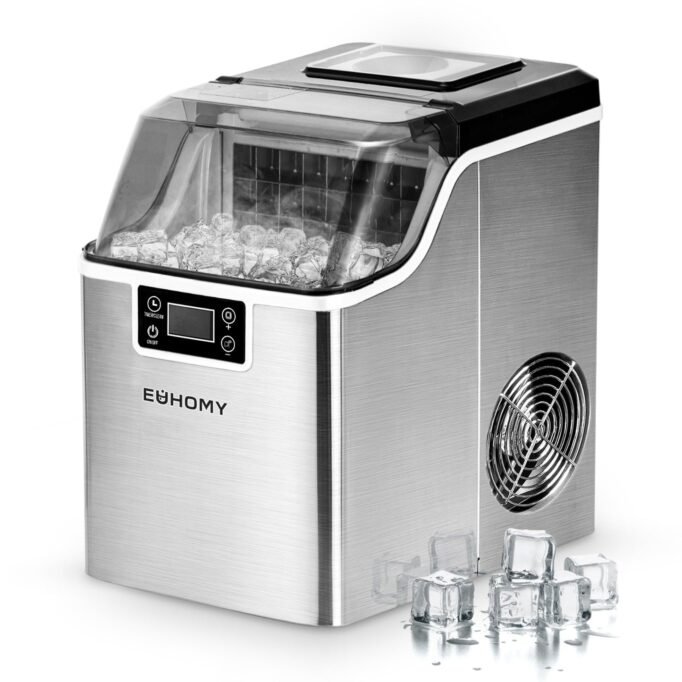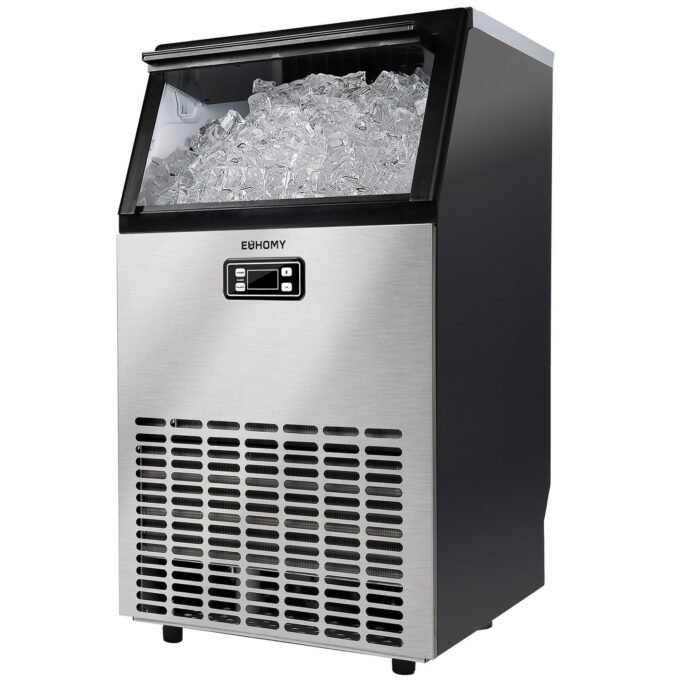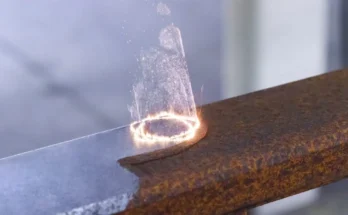Picture this: you’re hosting a summer barbecue, reaching for ice to fill your guests’ drinks, when you notice a strange odor coming from your ice maker. Or worse, you spot a thin film of residue coating the ice cubes. It’s an unsettling moment that makes you question everything you’ve served. Your ice maker, that convenient appliance you rely on daily, can quickly become a breeding ground for bacteria, mold, and mineral buildup if left unchecked. What should be providing clean, refreshing ice might instead be compromising your family’s health.

The challenge many homeowners face isn’t just recognizing when their ice maker needs attention, but knowing how to clean it properly without damaging the machine or leaving behind harsh chemical residues. With conflicting advice online and concerns about using the wrong products, it’s easy to put off this essential task. The good news is that maintaining a hygienic ice maker doesn’t require expensive services or complicated procedures. By understanding the right approach and using safe, effective cleaning solutions, you can ensure every ice cube that drops into your glass is as pure and clean as it should be.
Understanding Your Ice Maker
Ice makers function through a straightforward cycle that begins when water fills a mold, freezes through refrigeration coils, and then releases finished cubes into a storage bin. Whether you have a built-in refrigerator model or a standalone unit like those from Euhomy, the basic mechanics remain similar. The constant presence of water and fluctuating temperatures creates an environment where problems can develop quickly. Mineral deposits from hard water accumulate on surfaces, leaving white or cloudy residue that affects ice quality. Meanwhile, the moist, dark interior becomes an ideal habitat for mold and bacteria to flourish unnoticed. Even in freezing conditions, certain microorganisms can survive and multiply, particularly in areas where water sits before freezing or in the storage bin where temperatures hover just below freezing. Understanding these vulnerabilities helps explain why your ice sometimes tastes off or why you might notice slime on internal components despite the cold environment.

Why Regular Cleaning is Important
The health implications of a neglected ice maker extend far beyond unpleasant tastes or odors. Studies have found that ice from poorly maintained machines can harbor bacteria like E. coli, Salmonella, and Listeria, which survive in cold environments and pose serious health risks, especially to children, elderly individuals, and those with compromised immune systems. Mold spores that develop in damp areas of the machine can trigger allergic reactions and respiratory problems when consumed or inhaled during ice dispensing. Beyond health concerns, mineral buildup from hard water gradually reduces your ice maker’s efficiency, forcing it to work harder and consume more energy while producing fewer ice cubes. This strain shortens the appliance’s lifespan and can lead to costly repairs or premature replacement. Regular cleaning every three to six months prevents these issues from taking root. Clean machines produce better-tasting ice, operate more efficiently, and last significantly longer. The small investment of time in routine maintenance protects your family’s health while saving money on energy bills and potential repair costs down the line.
Choosing the Right Cleaning Solution
Selecting the appropriate cleaning solution for your ice maker requires balancing effectiveness with safety, since these products will contact surfaces that touch your drinking water and ice. White vinegar stands out as an excellent natural option that dissolves mineral deposits and kills many bacteria without leaving toxic residues. Its mild acidity breaks down scale buildup while being food-safe and requiring only a thorough rinse afterward. For tougher cleaning jobs, specialized ice maker cleaners formulated with citric acid or nickel-safe descaling agents provide stronger action against stubborn mineral accumulation without damaging metal components. Avoid using bleach or harsh household cleaners unless specifically recommended by your manufacturer, as these can corrode internal parts, leave dangerous chemical residues, or create lingering odors that transfer to your ice. Always check your owner’s manual for manufacturer-approved cleaning agents, as some warranties become void if unapproved chemicals damage the machine. Whatever solution you choose, ensure it’s thoroughly rinsed away before resuming ice production to guarantee every cube remains safe for consumption.
Step-by-Step Guide to Cleaning Your Ice Maker
Begin by turning off your ice maker and emptying all ice from the storage bin, discarding any cubes that look discolored or smell unusual. Unplug the unit if possible, or switch off the ice maker function on your refrigerator to prevent new ice production during cleaning. Remove any detachable parts like the ice bin, scoop, and accessible trays, setting them aside for separate washing. Mix your chosen cleaning solution—either two cups of white vinegar with one cup of warm water, or follow the dilution instructions on a commercial ice maker cleaner. Using a soft cloth or sponge dampened with the solution, wipe down all interior surfaces you can reach, paying special attention to corners, crevices, and the ice mold where buildup tends to accumulate. For removable components, soak them in the cleaning solution for fifteen to twenty minutes, then scrub gently with a soft brush to dislodge any stubborn residue or mold. Rinse everything thoroughly with clean water, ensuring no cleaning solution remains that could affect ice taste or safety. Wipe all surfaces with a clean, damp cloth multiple times until you’re confident all cleaner has been removed. For the water supply line and internal mechanisms you cannot easily access, run a cleaning cycle if your machine has this feature, or manually pour the cleaning solution into the water reservoir, allow it to sit for ten minutes, then flush completely with fresh water. Once everything is clean and rinsed, reassemble the components, turn the ice maker back on, and discard the first two or three batches of ice to ensure any residual cleaning solution is completely purged from the system before using ice for consumption.

Maintaining Your Ice Maker
Keeping your ice maker consistently clean requires establishing a maintenance routine that prevents problems before they start. Set a calendar reminder to perform a thorough cleaning every three to six months, adjusting the frequency based on your water hardness and usage patterns. Between deep cleanings, wipe down the ice bin weekly with a damp cloth to remove any dust or residue that accumulates. Check your water filter regularly and replace it according to manufacturer recommendations, typically every six months, as a fresh filter reduces mineral content and contaminants that contribute to buildup and affect ice quality. If you notice your ice production slowing or ice cubes becoming smaller, these are early warning signs of mineral accumulation that require attention before the problem worsens. Keep the area around your ice maker clean and dry, as external moisture can encourage mold growth that migrates into the machine. For homes with particularly hard water, consider installing a water softener or using filtered water for your ice maker to minimize scale deposits. Always use your ice regularly rather than letting it sit in the bin for extended periods, as older ice absorbs odors from the freezer and can develop off-flavors. When you go on vacation or won’t use the ice maker for several weeks, empty the bin completely and turn off the ice production to prevent stale ice and potential bacterial growth in stagnant water.
Common Mistakes to Avoid
One of the most frequent errors homeowners make is using abrasive scrubbers or steel wool on ice maker surfaces, which scratch protective coatings and create grooves where bacteria can hide and multiply. Another common mistake is failing to rinse thoroughly after cleaning, leaving behind chemical residues that contaminate ice and create unpleasant tastes. Many people also overlook the water supply line and filter, focusing only on visible surfaces while ignoring hidden areas where biofilm and mineral deposits accumulate. Using too much cleaning solution doesn’t improve results and actually makes rinsing more difficult, potentially leaving more residue behind. Perhaps the biggest mistake is inconsistent maintenance—cleaning once when problems appear, then forgetting about it for years until issues resurface. Avoid running your ice maker immediately after cleaning without discarding the first few batches, as this initial ice may contain traces of cleaning solution. Finally, never assume that freezing temperatures alone keep your ice maker sanitary, since many harmful microorganisms thrive in cold environments and require active cleaning to eliminate.
Protect Your Health with Regular Ice Maker Maintenance
A clean ice maker is more than just a matter of convenience—it’s a fundamental aspect of protecting your family’s health and ensuring the longevity of your appliance. The difference between contaminated ice harboring harmful bacteria and crystal-clear cubes that enhance your beverages comes down to consistent, proper maintenance using safe cleaning solutions. Whether you choose natural options like white vinegar or specialized commercial cleaners, the key lies in establishing a regular cleaning schedule and following through with thorough, careful attention to every component. The time you invest in quarterly deep cleanings and simple weekly maintenance pays dividends in better-tasting ice, lower energy costs, fewer repairs, and most importantly, peace of mind knowing that every cube you serve is genuinely clean. Don’t wait until you notice problems—take action today by scheduling your next small crushed ice maker cleaning, marking future maintenance dates on your calendar, and committing to the simple practices that keep this essential appliance working safely. Your guests, your family, and your future self will thank you for making ice maker hygiene a priority in your home.




